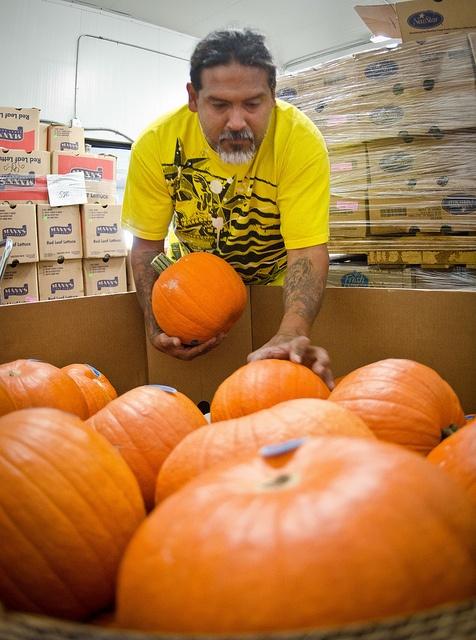
This is the last segment in a four-part series on undertaking a sustainable-sourcing business approach to innovate private store brands. Click here to view section one about the myths, risks and opportunities of sustainable sourcing. I introduced the Crawl-Walk-Run approach earlier in this series; learn about the Crawl Phase here and the Walk Phase here. Today I am concluding with the Run Phase.
Consumer demand for sustainable food products has reached unprecedented levels in recent years, boosting loyalty to brand values, rather than to brands. Sustainable sourcing will strengthen your brand and build a sustainably-savvy customer base, which is highly loyal to its value equation.
Your goal is to earn the loyalty of these customers as they discover the values inherent in your sustainably-sourced private brand. To do this, it is most important to establish your team of private brand stewards and develop an approachable, believable and doable sustainable-sourcing strategy.
I introduced the Crawl-Walk-Run approach earlier in this series and outlined actionable steps to take in the Crawl and the Walk Phases. Let's explore the last phase in the sustainable sourcing journey, the Run Phase.
Scaling up the programs: Run
In the last stage of your sustainable-sourcing journey, you will be running. You will be scaling the program, working with your supplier partners to improve formulations, innovating new formulations and executing packaging initiatives. You will find these improvements will produce meaningful and loyalty-building conversations with both your current and new customers now buying your products.
Packaging
In the Crawl Phase, you put a recycling program in place. In the Walk Phase, you began reducing packaging. Now, to Run, you will look at the materials making up your packaging.
There are several options. You can provide packaging using recycled content. At a minimum, you want to use pre-consumer recycled content materials, and you likely already do so. Pre-consumer materials were never used or touched by the consumer. They are materials that were discarded and reused within the manufacturing process.
Most recycled content packaging in the store and in the corrugate is pre-consumer. But, what about all the paper and glass being collected in recycle bins? People always wonder if that ends up in landfill. These materials are input into post-consumer recycled packaging.
Post-consumer closes the loop from people putting stuff in their recycling bins and it being repurposed as packaging. Packaging can be a mix of pre-consumer and post-consumer fibers. If you use post-consumer fibers in packaging, make sure to let your customers know! Even better is to ensure that your packaging is commercially compostable. As more commercial composting facilities become available, your packaging will already meet the compostable criteria.
Animal well-being
You collected processing plant animal welfare audit results and required corrective actions for audit deficiencies in the Crawl Phase. You have informed your animal protein suppliers of your positions on particular animal welfare criteria in the Walk Phase.To Run, it is time to create your animal protein specifications with on-farm animal welfare certifications that are traceable and auditable.
USDA Certified Organic has some animal well-being requirements that must be met. Sustainably-savvy consumers, however, may be looking for higher animal well-being standards than those required in USDA Certified Organic. You may want to have private brand American Grassfed Certified beef or private brand Certified Humane cage-free eggs. You may want to require the Global Animal Partnership (GAP) five-step rating certification, giving producers the option at which step to qualify.
Animal Welfare Approved is a stricter option, a program which will not certify producers with dual production systems and requires the same level of animal welfare conditions for all livestock. You can see how requiring your suppliers to meet these on-farm certifications will require the steps I suggested in the Crawl and Walk Phases.
Customer communication
To get to the Run Phase, you already needed to have consistent communication with your private brand suppliers and manufacturers. You have also been promoting your efforts to customers through social media, point-of-sale materials in-store and messaging on your website. To Run, you will need to be committed to regularly communicating your sustainable-sourcing attributes through more innovative marketing vehicles that reflect your private brand's sustainable-sourcing strategy.
Sustainable sourcing for private brands
To encourage private brands to undertake sustainable sourcing, we examined widely-held myths, risks and business opportunities. We have introduced the Crawl-Walk-Run approach and outlined actionable steps to take along the way. It is most important to establish your team of private brand stewards and develop an approachable, believable and doable private brand sustainable sourcing strategy.
There are sustainable sourcing opportunities in areas such as packaging, supplier diversity, food waste and supply chain animal well-being. Develop strategies that give your private brand products the “AND” factor, so customers feel they are getting more for their money. Communicate your efforts effectively and attract LOHAS (lifestyle of health and sustainability) and millennial loyalty and dollars to the value equation reflected in your private brand sustainable sourcing strategy.
Portions of this were originally published in Henry Stewart Publications 2045-855X Journal of Brand Strategy VOL. 4, NO. 2, 000–000 Summer, 2015
Image Credit: Flickr/Department of Agriculture
As CEO of <a href="http://www.SustSolutions.com">Sustainable Solutions Group</a>, Ms. Janice Neitzel uses a data-driven approach in leading top food industry decision-makers in answering consumer demand for higher animal welfare meat, dairy, and eggs. Her clients range from international to North American to regional food companies, including food manufacturers, retailers, grocery, private brand, quick service, casual dining and fast casual restaurant chains. Ms. Neitzel has an MBA in Sustainable Management from the Presidio Graduate School and is a Certified Group Facilitator. With Dr. Temple Grandin as a primary advisor, Ms. Neitzel leads decision-makers to consensus on supply chain Animal Welfare and Antibiotics Policies, for a more sustainable food supply chain.














